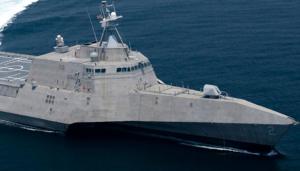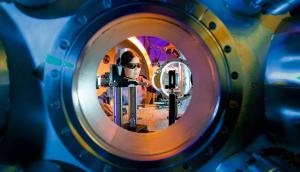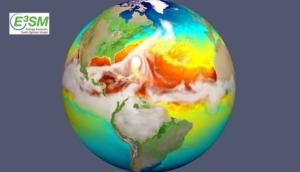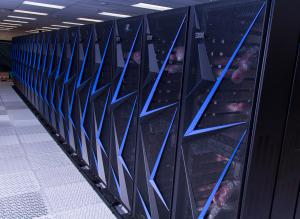LAB REPORT
Science and Technology Making Headlines
May 18, 2018


Peter Lindstrom
Zip coding for real
Peter Lindstrom is a computer scientist in the Center for Applied Scientific Computing at Lawrence Livermore. His primary research areas include data compression, scientific visualization, computer graphics and scientific computing.
Lindstrom is the inventor of several open source compression schemes for floating-point and mesh-based scientific data, including zfp, fpzip and hzip and has published more than two dozen papers related to data compression. He leads the zfp data compression effort as part of the Department of Energy’s Exascale Computing Project and is co-investigator on LLNL’s efforts in Variable Precision Computing.
His zfp software has been adopted by HPC I/O libraries like HDF5 and ADIOS and is being integrated into popular visualization tools like VisIt, VTK-m and Cinema. He previously served as editor in chief for Graphical Models and is a senior member of IEEE.


GE and LLNL are manufacturing 3D-printed replacement parts to repair the U.S. Navy’s aging fleet.
Sailing the seas of 3D
It can take months for replacement parts to be manufactured for the U.S. Navy’s aging fleet of ships and planes.
But new research by GE Global Research in collaboration with Lawrence Livermore will make 3D printed digital twins from model-based data on parts and sensor-that dramatically speed up the qualification and certification process for replicating and printing replacement parts no longer manufactured for various naval marine and aviation assets and to create parts for newly designed vehicles.
LLNL is bringing to the partnership its years of research and development of intelligent “feed forward” design methods in metal additive manufacturing. The Livermore method combines multi-physics modeling and simulation with state-of-the-art experimental observations to train 3D printers to predict and produce defect-free metal parts the first time, in lieu of traditional “trial and error” approaches.


The inside of the target chamber at the Omega Laser at the University of Rochester’s Laboratory for Laser Energetics, where lasers are being used to compress iron-silicon samples to ultra-high-pressure conditions of exoplanetary cores. Credit: Laboratory for Laser Energetics
Under pressure
By studying how iron and silicon alloys respond to extraordinary pressures, Lawrence Livermore scientists and collaborators are gaining new insights into the nature of super-Earths and their cores.
Scientists have identified more than 2,000 of these “super-Earths,” exoplanets that are larger than Earth but smaller than Neptune, the next-largest planet in our solar system.
The new research allows scientists to directly access the extreme pressures of the deep interiors of exoplanets and measure important properties. Scientists previously were restricted to either theoretical calculations or long extrapolations of low-pressure data. The ability to perform direct experiments means they can test theoretical results and provide a much higher degree of confidence in the models for how materials behave under these extreme conditions.
The work resulted in the highest-pressure X-ray diffraction data ever recorded.

The high-resolution E3SM earth system model simulates the strongest storms with surface winds exceeding 150 mph -- hurricanes that leave cold wakes that are 2 to 4 degrees Celsius cooler than their surroundings. This simulation represents how sea surface temperature changes evolve as a hurricane (seen here approaching the U.S. East Coast) moves across the Atlantic and how the resultant cold wake affects subsequent intensification of the next hurricane.
Just like Earth
The Earth -- with its myriad shifting atmospheric, oceanic, land and ice components -- presents an extraordinarily complex system to simulate using computer models.
But a new Earth modeling system, the Energy Exascale Earth System Model (E3SM), is now able to capture and simulate all these components together. After four years of development, E3SM, which launched last month, features weather-scale resolution -- enough detail to capture fronts, storms and hurricanes -- and uses advanced computers to simulate aspects of the Earth’s variability. The system can help researchers anticipate decadal-scale changes that could influence the U.S. energy sector in years to come.
“This model adds a much more complete representation between interactions of the energy system and the Earth system,” said David Bader, a computational scientist at Lawrence Livermore and overall E3SM project lead. “With this new system, we’ll be able to more realistically simulate the present, which gives us more confidence to simulate the future.”


A request for proposals has gone out for the next generation of high performance computers.
Next-gen supercomputers
The Energy Department wants two more exascale computers at its national laboratories by 2023.
Last month, the agency said it had issued a request for proposals for exascale computer systems at Oak Ridge National Laboratory and Lawrence Livermore National Laboratory.
Together, the supercomputers could be worth as much as $1.8 billion and would be deployed between 2021 and 2023, according to the department.
Each system must meet the mission needs of DOE’s Office of Science’s Advanced Scientific Computing Research Program and the Advanced Simulation and Computing Program at the National Nuclear Security Administration.





